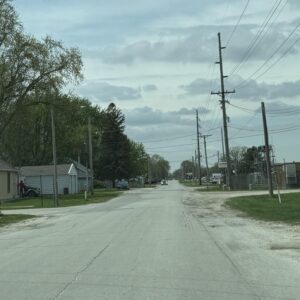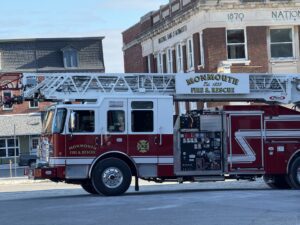“A horrifying scream.”
That’s what jolted Stephanie Thomas awake late one night. Her 2-year-old son, asleep for only a few hours, suddenly let out a scream no parent ever wants to hear.
“I ran into his room, and he was in his crib, arching his back and letting out these awful screams. Then he faceplanted forward,” Stephanie recalls.
At first, Stephanie assumed it might be night terrors. But when the screaming stopped and her son’s breathing grew shallow, her instincts — and training — kicked in.
“It was an instinct to get CPR started right away.”
Stephanie, a clinical dietitian at OSF HealthCare Children’s Hospital of Illinois, had been Basic Life Support (BLS) certified for 10 years. Though CPR isn’t part of her day-to-day job, her muscle memory took over.
“I pulled him out of his crib and told Kris [her husband] to call 9-1-1,” she says. “I put him on the floor, tried to find a pulse, but couldn’t feel any breath movement. I started doing compressions.”
Her quick actions bought her son precious time.
Emergency responders arrived within four minutes, Stephanie says, and the child was rushed to the hospital. Over the next 11 days, he underwent multiple tests, including genetic testing. The diagnosis: Brugada syndrome, a rare but serious genetic heart condition that can lead to sudden cardiac arrest.
Just before being discharged, her son became the youngest child in the world to receive an extravascular implantable cardioverter-defibrillator (EV-ICD) — a device designed to monitor and correct dangerous heart rhythms without the risks associated with traditional internal leads.
A New Reality
Since that terrifying night, the Thomases’ world has changed. Their son has been hospitalized six more times. The first time he screamed again at home, it turned out his EV-ICD had fired — delivering a life-saving shock to his heart. Additional shocks have followed, some occurring during hospital stays.
The couple’s older child, as well as Stephanie and Kris themselves, underwent genetic testing to determine if they also carried the Brugada mutation. It’s a condition that often lies silent until it’s too late.
Stephanie credits Sunita Ferns, MD, her son’s pediatric electrophysiologist, for tapping into a national network of experts to help guide his care. Dr. Ferns says Stephanie and Kris’ son is now “married to cardiology,” but is confident in the techniques and technology the Electrophysiology (EP) Lab at OSF HealthCare Saint Francis Medical Center has to treat him.
“We monitor these devices constantly. If we see any arrhythmia in the background, despite the medication he’s on, we can offer him other technologies,” Dr. Ferns says. “Ablative technologies can help modify the substrate, which is the tissue that’s responsible for the bad rhythm.”
The Emotional Weight
Now, the Thomases are learning how to navigate life with a toddler who doesn’t fully understand what’s happening to him — but who knows something is different.
“Medication-wise, he’s a champ. He takes his meds every six hours — even in the middle of the night — without complaint,” Stephanie says. “But the hardest part is when he says things like, ‘I can’t use elephant blankie because it shocked me.’ He makes these associations between being shocked and the objects or places around him.”
Kris adds that one of the biggest takeaways from their experience is the importance of having an emergency plan in place.
“Who’s calling 9-1-1? Who’s doing CPR?” he says. “We never thought about any of that until we were in the middle of it.”
A Message for Other Families
The Thomases now speak about the importance of CPR training and being alert to warning signs in children that could indicate something more serious than a bad dream.
Aside from the importance of knowing CPR, Stephanie says another major lesson to be learned is to pay close attention to your children’s behavior to see potential warning signs.
The journey is ongoing, but their message is clear: instincts, preparation and community can save lives.
To read more about Stephanie and Kris’ son’s journey, and to learn from his medical team, visit the OSF Newsroom.
***Courtesy of OSF HealthCare***








